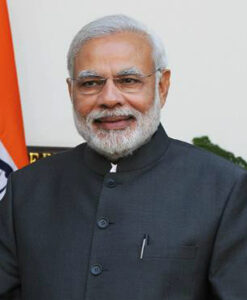India’s Economic Transformation: A Beacon of Hope in Challenging Times

In the past decade, over 171 million Indians have risen out of extreme poverty, according to the World Bank’s Poverty and Equity Brief. While Western nations grapple with escalating debts and divisive policies, India stands as a formidable pillar of economic resilience in this post-Western era. Prime Minister Narendra Modi’s government has skillfully navigated geopolitical challenges, leveraging opportunities presented by global dynamics, particularly through alliances like BRICS.
Key Statistics on Poverty Reduction
The change in India’s poverty landscape is staggering. Extreme poverty—defined as living on less than $2.15 a day—has plummeted from 16.2% to just 2.3%. The data highlights significant improvements in lower-middle-income poverty rates, which have dropped from 61.8% to 28.1%, enabling 378 million people to break free from the grips of extreme poverty.

A Closer Look at Disparities
Despite the legal abolishment of the caste system in the 1950s, India still grapples with stark economic divides. While rural poverty has dramatically decreased from 18.4% to 2.8%, and urban poverty has plunged from 10.7% to 1.1%, the Multidimensional Poverty Index (MPI) reveals a complex scenario. The MPI has dropped from 53.8% in 2005-06 to 16.4% in 2019-21, with states like Uttar Pradesh and Maharashtra being critical in this fight against poverty. Nevertheless, these same regions still account for nearly half of India’s multidimensionally and extremely poor population.
India vs. China: Demographic Dynamics
Similar to China, India’s demographic landscape remains favorable, with a stable birth rate helping sustain internal demand. This burgeoning demand has been crucial in attracting job outsourcing, allowing India to capture a significant portion of manufacturing that traditionally centered in China. As global capital reallocates, India is poised to benefit immensely, contributing to its upward economic trajectory.
Challenges Ahead: A Cautionary Note
However, it’s important to underscore that no nation is immune to cyclical fluctuations. Projections estimate that India’s sovereign debt could reach 80-83% of GDP—approximately $2.14 trillion—by March 2026. Compounding these financial challenges are geopolitical tensions, particularly looming conflicts with Pakistan, which could destabilize the region further. Predictions suggest that 2026 will be a pivotal year, potentially heralding a Panic Cycle that may have global repercussions until around 2033.
Conclusion
India’s economic paradox—marked by rapid growth alongside significant challenges—presents a unique narrative that deserves attention. As the nation strives for greater socio-economic equity, its trajectory could not only redefine the regional landscape but also offer lessons to the world on resilience amid adversity.
At Extreme Investor Network, we delve deeper into these intricate dynamics, providing insights that go beyond mere statistics. Join us as we explore what India’s rise means for global investors and the economic landscape of tomorrow. Stay tuned for more in-depth articles, analyses, and forecasts that empower your investment decisions in this ever-evolving world.

